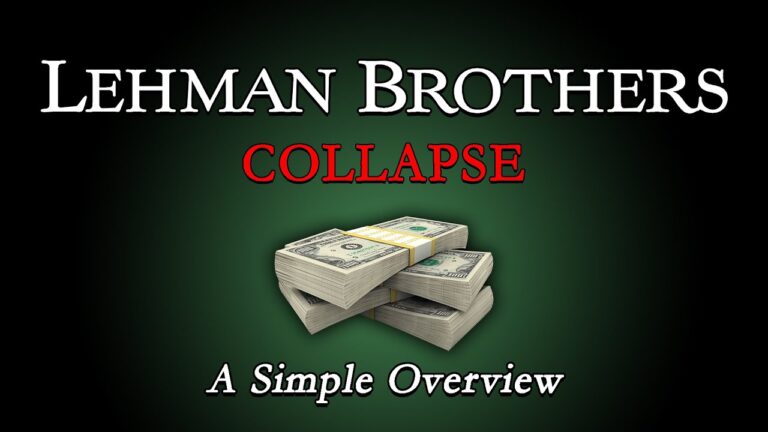Learn about the Collapse of Lehman Brothers and What Triggered the Financial Crisis of 2008 and Pushed the World into Economic Recession with Open Public Facts (from Wikipedia) and Video Guides by Experts (Youtube etc)
Lehman Brothers’ Bankruptcy Explained Based on Public Facts
The bankruptcy of Lehman Brothers on September 15, 2008 was the climax of the subprime mortgage crisis. After the financial services firm was notified of a pending credit downgrade due to its heavy position in subprime mortgages, the Federal Reserve summoned several banks to negotiate financing for its reorganisation. T
hese discussions failed, and Lehman filed a Chapter 11 petition that remains the largest bankruptcy filing in U.S. history, involving more than US$600 billion in assets. The bankruptcy triggered a 4.5% one-day drop in the Dow Jones Industrial Average, then the largest decline since the September 11, 2001 attacks.
Lehman Brothers Collapse Explained in the Following Video by Company Man
The United States subprime mortgage crisis was a multinational financial crisis that occurred between 2007 and 2010 that contributed to the 2007–2008 global financial crisis. It was triggered by a large decline in US home prices after the collapse of a housing bubble, leading to mortgage delinquencies, foreclosures, and the devaluation of housing-related securities.
Subprime Lending
In finance, subprime lending (also referred to as near-prime, subpar, non-prime, and second-chance lending) is the provision of loans to people in the United States who may have difficulty maintaining the repayment schedule. Historically, subprime borrowers were defined as having FICO scores below 600, although this threshold has varied over time. These loans are characterised by higher interest rates, poor quality collateral, and less favourable terms in order to compensate for higher credit risk. Many subprime loans were packaged into mortgage-backed securities (MBS) and ultimately defaulted, contributing to the financial crisis of 2007–2008.
Learn How Lehman Brothers Crashed The World Economy in the Following Video Guide by Wall Street Millennial
What Is Subprime?
The term Subprime refers to the credit quality of particular borrowers, who have weakened credit histories and a greater risk of loan default than prime borrowers. As people become economically active, records are created relating to their borrowing, earning, and lending histories. Subprime borrowers have credit ratings that might include:
- Limited or no debt experience; limited or no possession of property assets that could be used as security (for the lender to sell in case of default);
- Excessive debt the known income of the individual or family is unlikely to be enough to pay living expenses, plus interest and repayment;
- A history of late or sometimes missed payments;
- Failures to pay debts completely (default debt);
- Legal judgments such as “orders to pay” or Bankruptcy


